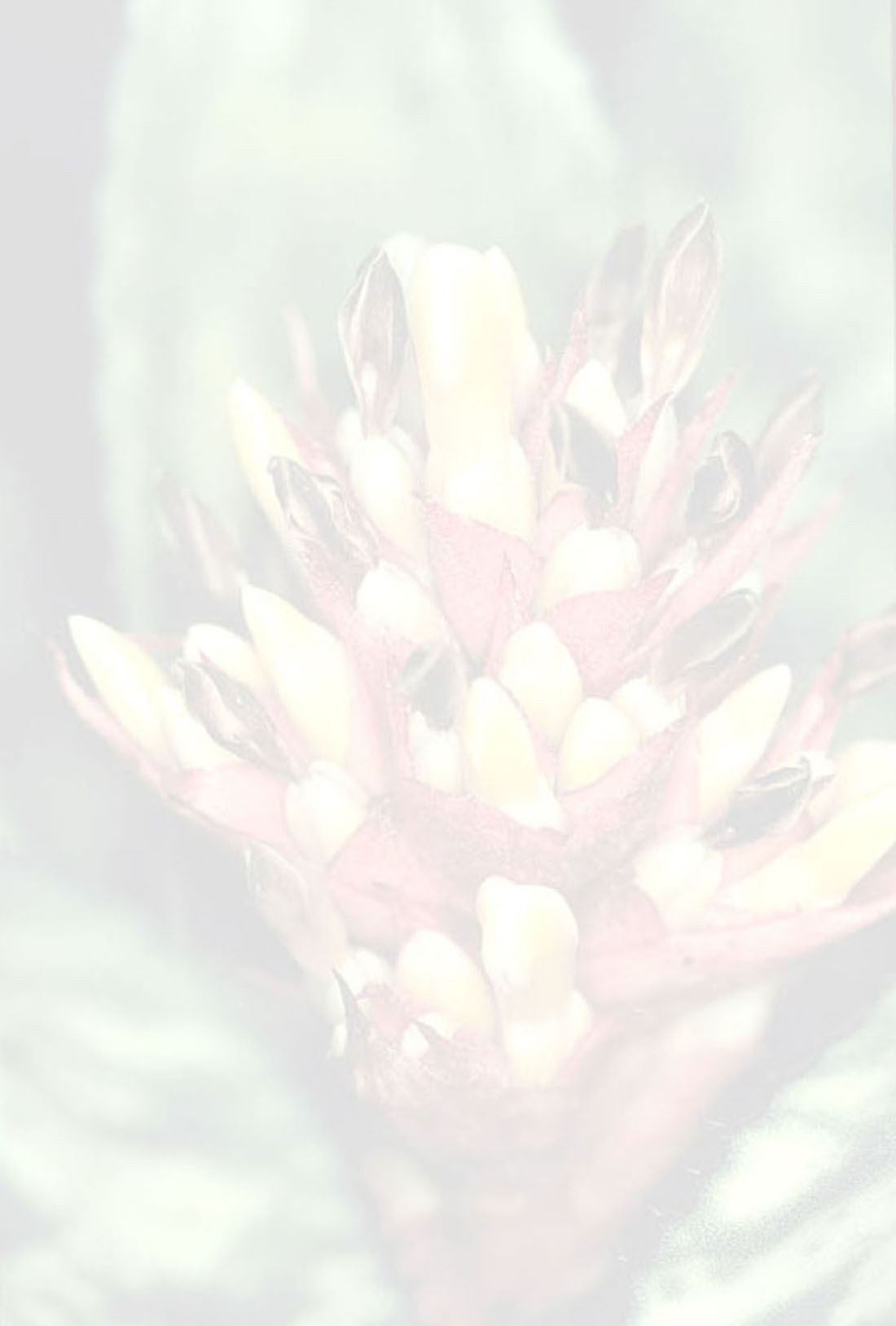
Aechmea servitensis var. servitensis Andre
Literature references:
Comments:
- Misnamed Bromeliads, N0. 8 by Harry E Luther in J. Brom. Soc. 41(4): 167-8. 1991
Aechmea penduliflora Andre.
This commonly cultivated aechmea has a wide distribution in tropical America from Nicaragua south to Peru and Brazil. Several now-synonymous names have been applied to various populations with one, Aechmea schultesiana, still occasionally used for cultivated plants.
The most commonly grown form of Aechmea penduliflora is apparently of Colombian origin. These plants have relatively thin, very sparsely serrate, reddish leaves. The inflorescence is unimpressive.
In the mid-1970s a bright green, spiney-leafed plant from eastern Ecuador was introduced by the German horticulturist Hermann Prinsler. This "new" bromeliad quickly became very popular because of its rapid growth and brilliantly colored inflorescence. It was eventually identified as Aechmea servitensis var. exigua by Wilhelm Weber. It has become very common under this name in American and possibly Australian collections. It is not A. servitensis var. exigua, unfortunately. The correct name is A. penduliflora. Perhaps a cultivar name should be given to the Ecuadorian plant to distinguish it from its less beautiful relatives. The front cover photograph shows a form very similar to the Prinsler introduction but from Limon Cocha in eastern Ecuador.
True Aechmea servitensis var. exigua (see photo) is very rare in cultivation. In Florida it is difficult to grow well as it dislikes high temperatures and is prone to leaf spotting. It is native to southeast Colombia and northeast Ecuador generally above 1000 m elevation. In contrast, A. penduliflora, in all its myriad forms, rarely grows above 500 m. elevation.
OBSERVATIONS. This variety exigua is distinguished from the typical one in its cylindric (versus triangular) inflorescence, red primary and peduncular bracts 1.5 cm wide (versus 5 cm long and pink) and the undersides (abaxially) of the leaves reddish (versus green). It is found only above 1000 m elevation in the province of Sucumbios. It is easily confused with A. penduliflora, from which it differs in the smaller floral bracts and sepals and the leaves ascending with the undersides reddish and partially covered with white trichomes. —See Smith & Downs 1979

